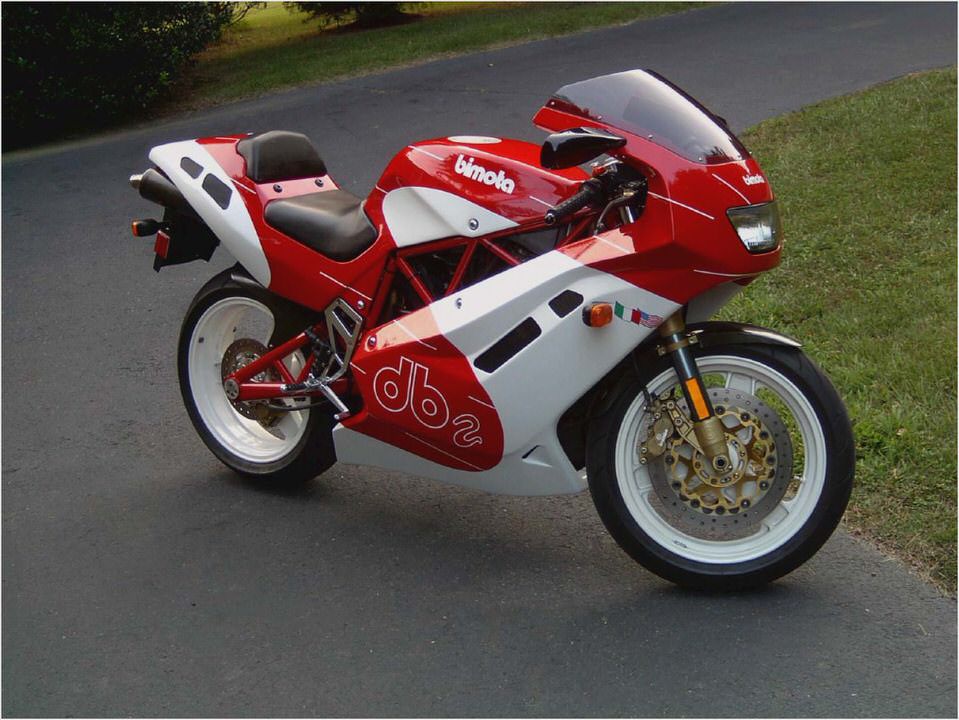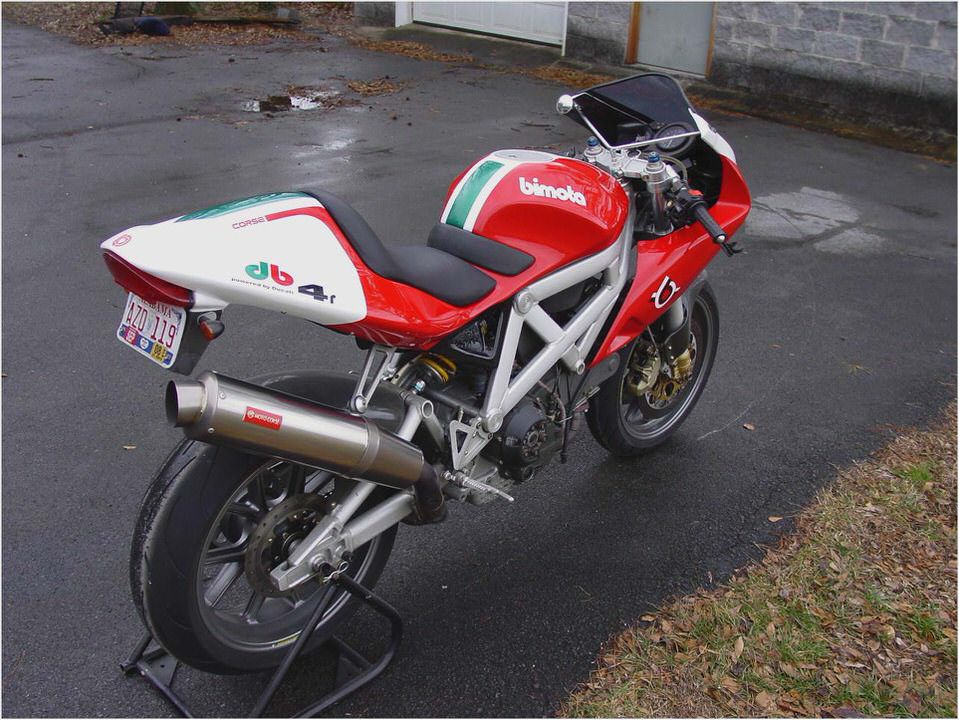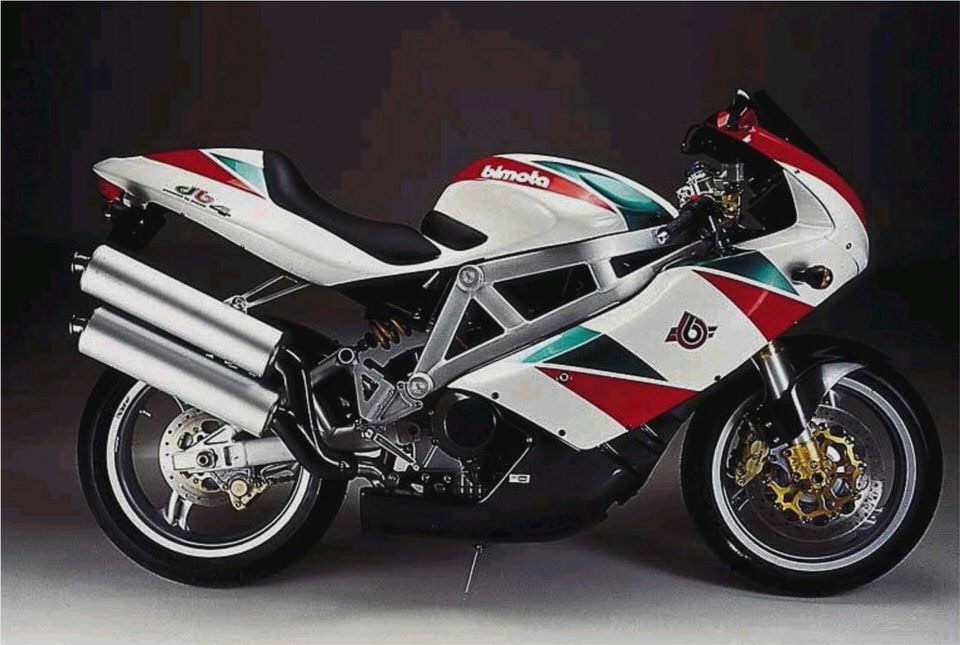
Brute force à la carte
Photos by Bimota
Pick the best from the best, machine it and bolt it together by hand and, voila, you have a Bimota. The DB7 oozes of exclusivity from the design to the choice of the 160-horsepower Ducati Testastretta 1098 engine. We got the chance to ride Bimota’s first superbike since the SB8R on Misano.
Misano is a beautiful place in the world. Located by the Italian Adriatic coast close to the towns of Riccione and Rimini surrounded by lush hills, it’s a Mecca for motorcycling. Not a bad place to introduce such a mouth-watering prospect as the Bimota DB7.
Bimota is the only factory in the world allowed to place Ducati’s gem of a 1099cc V-Twin engine in its own chassis. Just to give you an idea of just how exclusive this motorcycle is, Bimota only plans to build 300 DB7s per year, which will be about 50% of the planned overall production in 2008.
Ex-Ducati man Dan Van Epps preaches proudly that each DB7 is built by hand by two Bimota technicians. Those two technicians follows that very bike all the way to actually also building the shipping crate! That’s just how exclusive and exotic the Bimota DB7 1098 is.
I fire her up in pit lane with great anticipation. My expectations are high and I notice straight away that neither the clutch lever nor gear pedal is set up for my chunky Alpinestars Supertech Rs. The seat is hard and as you’d expect on a sportbike like this.
The reach to the clip-ons isn’t too extreme, but under no circumstances could you call the Bimota DB7 a comfortable motorcycle. Cornering, the change from left to right or visa versa is made easy by the shape of the seat and grippy rear-sets.
Getting completely behind the windscreen on the straights is more difficult. There’s not much space to move my backside backwards and the shape of the 16-litre fuel tank prevents lowering my upper body much. The profile of the fuel tank is not as ideal as, let’s say, on a Yamaha R6.
The DB7 is no R6, though, and there’s abundance in torque and horsepower to punch a big hole in the air anyway. A major asset to the Bimota DB7 package is its Ducati 1098 engine. Bimota have modified the big V-Twin with a different and more efficient side-mounted exhaust system and added a Walbro ECU.
This has resulted in a claimed 30% boost in torque between 4-7000 rpm compared to the Ducati 1098. The extra torque in this area of the powerband allows a fantastic corner exit with a wide-open throttle. The traction provided by the V-Twin pulses transmitted through the fully adjustable Extremetech 2v4 shock out to the 190 Conti rear tyre mid-corner is great. Upon the exit itself when the 160 horsepower Twin nears the peak, a power slide could be slightly too easy.
I think that’s an easy fix with a different more grippy rear tyre, but enough about that.
It doesn’t take the Continental Race Attack tyres long to warm up. After a couple of laps I can apply the front brake more generously. The Brembo monoblocks are very powerful.
Gradually I apply more and more particularly after the start/finish straight down from 200+km/h to around 100km/h. Before I had had any chance to make adjustments to either suspension or levers I experienced a lot of movement under hard braking. At the same time I couldn’t click down the 6-speed gearbox quick enough due to set-up issues.
So I’ll skip straight over to my second session when all issues miraculously had gone! Blake Conner from Cycle World and I shared the same bike and we had complained about the same things. It goes to show what a precision tool the Bimota DB7 really is.
Pretty much everything can be adjusted to a rider’s preference on this hand-crafted Italian piece of jewellery. I reckon jewellery is the right word here; just look at all the machined aluminium billet parts, perfect lines and quality parts.
A few clicks more compression in the front Marzocchi Corse RAC fork settled the front, as I’m probably around 65 pounds heavier than the Italian test rider. That fork is a fully adjustable USD 43mm with diamond-like coating.
But, as with any Bimota, the chassis really is the icing on the cake. The hybrid trellis frame is worth hours of staring with admiration. Chro-moly oval tubes are bolted to robust aluminium machined alloy plates.
It’s the same story for the swingarm that is attached to Bimota’s lightweight 10-spoke forged alloy wheel.
Back out on the Misano circuit again, and all this transforms into an incredibly responsive motorcycle. Even with a steering damper the DB7 gives a slight headshake accelerating at full throttle towards the 10.500-rpm redline (rev limiter at 11.000). On the main straight I click up the gearbox without using the clutch. The red gear-shift warning light is accurate and visible whilst riding, so again it’s easy to be precise on the DB7 or to use over-rev.
I see 235 km/h on the digital speedometer before Curvone that now is a right-hander where you can put your knee down doing 200 km/h should you wish to. Putting my right knee out into the wind did unsettle the DB7 a bit.
There’s never any need for first gear on the DB7, as the massive midrange enables massive acceleration in a higher gear than most other sportbikes. Short-shifting is the name of the game in technical parts that allows you to concentrate on the perfect line rather than which gear you should be in. I still used the over-rev a few times followed by some nicely controlled engine braking.
What impresses me the most about the Bimota DB7 is the fully adjustable nature of the whole package: from the ride height, suspension, levers etc. Secondly it’s the sheer power from the 1098 engine that still delivers in a civilised way. The DB7 is deceptively fast and the acceleration is out of this world from as low as 7.000 rpm.
Just a slight off/on of throttle shoots the front wheel sky high in that super-controllable Twin fashion. Then look at all the details that go into making the DB7. Even the fully adjustable brake and clutch levers are machined aluminium alloy. Phew, if it hadn’t been for those rubbish mirrors, I think I’d run and buy one straight away.
Oh, I haven’t got the £21.000 for one anyway you say? Right, that’s the reason then.


- HISTORY OF THE FRONT END – PART II – BIKE ME!
- 2012 Maruti Suzuki Swift Dzire – Images, specs and review
- 2013 NFL playoffs — SB XLVIII storylines start with Manning – ESPN
- 2013 Bimota DB9 Brivido Review
- Bimota SB2

